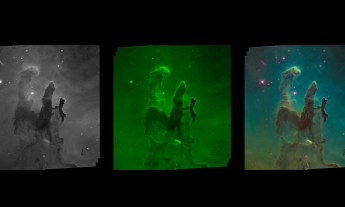Invisible to the eye and undetectable by most sensors, the small frequency of light called terahertz has eluded scientists for more than a century. That is finally changing — and revealing amazing visuals in the process.
In 2011, Albert Redo-Sanchez and his colleagues made an extraordinary discovery. Using terahertz technology, a recent addition to the array of imaging tools that can see beyond a painting’s surface, they uncovered a signature on a 1771 painting, Sacrifice to Vesta, by the great painter Francisco de Goya. Hidden from view beneath layers of paint and varnish, the signature was invisible to all. All but terahertz, that is. The discovery opened up new avenues in terahertz research and got Redo-Sanchez, a physicist and art enthusiast, thinking, What surprises lurk beneath other art masterpieces in the world’s museums? What if, faced with The Da Vinci Code’s cryptex, you didn’t have to touch it to see inside? And what if you could read a letter without opening the envelope? As he explained in a talk at TEDxBeacon Street, Redo-Sanchez thinks terahertz could help us do just that.
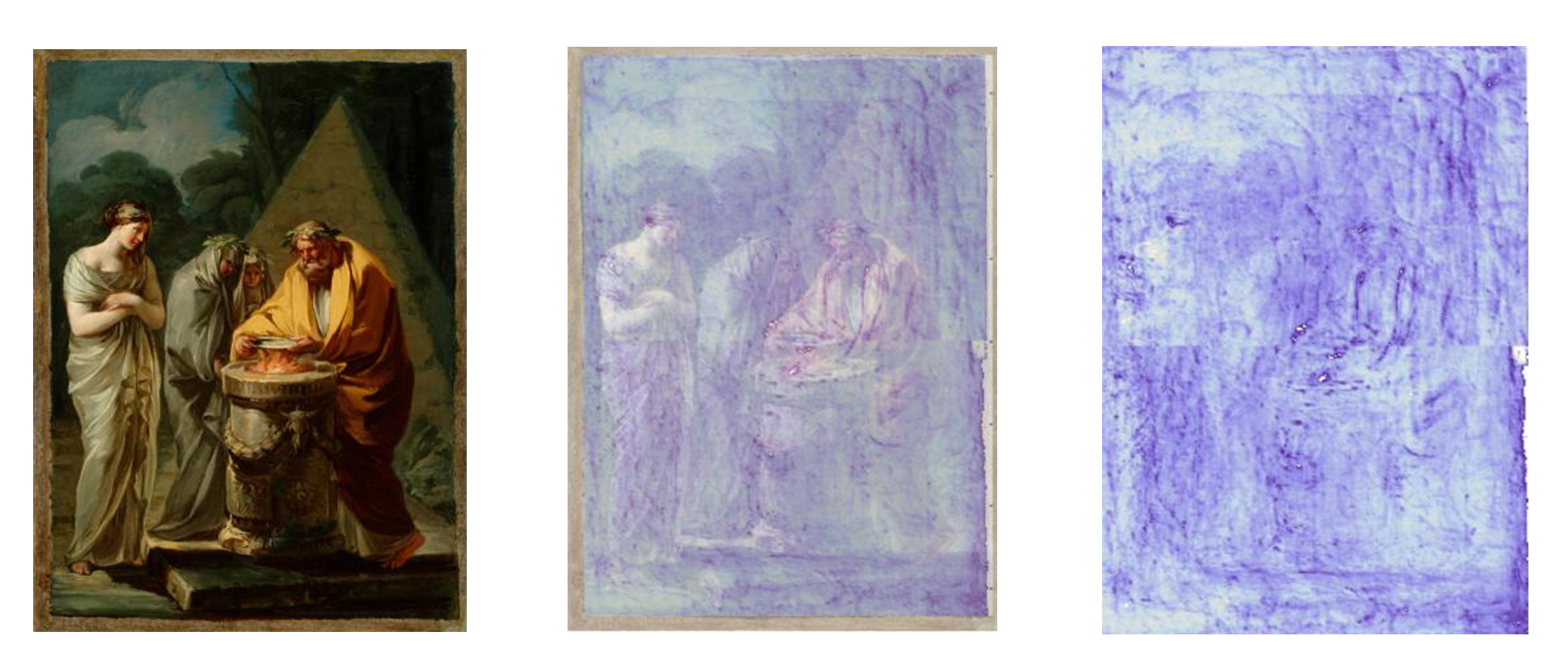
What is terahertz?
Like the many other kinds of electromagnetic radiation we already know about — X-rays, gamma rays, ultraviolet rays — the term terahertz generally refers to a specific frequency, sandwiched in a gap between microwaves and infrared light waves and measuring roughly from .1 to 10 THz. (The most familiar part of the electromagnetic spectrum is visible light, the frequencies of which range from around 400 to 700 THz.)
For most of the last century, this part of the spectrum, called the “terahertz gap,” eluded analysis and detection. “Terahertz radiation has always existed,” says J. Bianca Jackson, a specialist in the technology and pioneer in its use for cultural heritage conservation. “We radiate terahertz radiation, and so do the stars — astronomers use it for radio telescopes. So it was never really ‘invented,’ so to speak, but detectors for terahertz were difficult to obtain.”
That changed in the 1980s with the development of a new technology that could be used both as source and detector of terahertz radiation. The development gave us a new way to see the world. X-rays, infrared and radar had already given us a new way to look inside the human body, to see at night and view far-off airborne objects. The arrival of terahertz technology opened up a whole new part of the spectrum, at wavelengths of 100 micrometres to 1 millimetre, and it changed spectroscopy — the study of how light is absorbed and reflected by different materials. Terahertz, unlike other wavelengths in the spectrum, lets us ‘see’ through many materials, like paper, plastic, ceramic and textiles. It’s also sensitive to the chemical composition of an object.
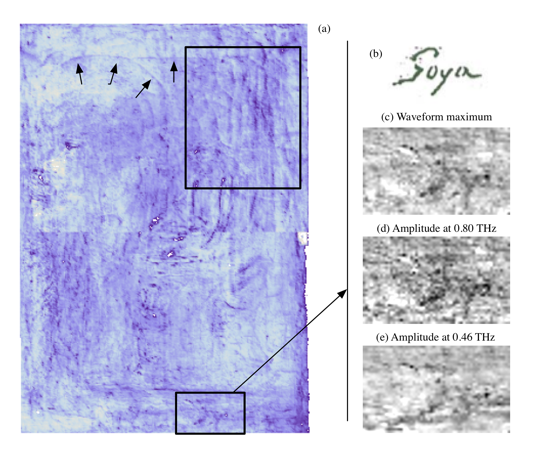
Terahertz radiation has some important properties, but one stands out: it’s non-ionizing. That means it doesn’t put so much energy into the object that it starts to change its composition, explains Jackson, and this gives terahertz an advantage over X-rays, which are more powerful but also ionizing, with the potential to disrupt molecular bonds and harm living tissue. “You can have images in terahertz that are similar to the x-ray,” says Redo-Sanchez, “but without the health hazards.” It also operates in pulse mode, like radar and ultrasound, so you can get information about the range and depth of objects, he says.
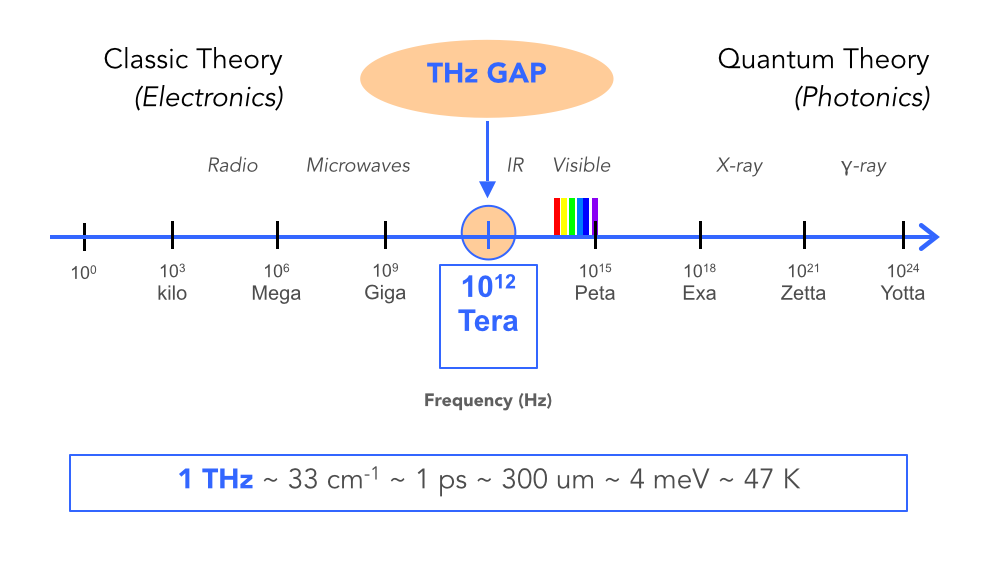
So far and so close.
These unique properties have helped scientists gather images from as far away as emerging galaxies; astronomical observatories are among the biggest users of sub-millimeter wavelengths, or terahertz radiation, including the massive Atacama Large Millimeter Array, or ALMA. But terahertz also has plenty of applications down on earth. The pharmaceutical industry uses terahertz spectroscopy to look at small variations in chemical compounds. In some of her earliest work on terahertz for the US military, Jackson used T-rays to check for damage on the ceramic coating used to protect the turbo blades of aircraft jet engines.
Many of the applications using terahertz are involved in quality control. In a 2008 study, scientists found that terahertz imaging could successfully detect non-metallic objects in a Hershey Bar. That means almonds but also less desirable objects — pieces of stone, glass or plastic — that would be missed by a metal detector yet have the potential to do serious harm if eaten or swallowed. Now, new applications are opening up as scientists explore biomedical applications for terahertz imaging, too. Water absorbs terahertz, so it’s not very effective for scanning living tissues like the human body which have a high water content. Still, it could be an effective tool for detecting skin cancer, says Jackson, as it could pick out the density difference between a tumor and healthy skin.
More controversially, surveillance technology companies are making portable terahertz scanners that can peer through clothes to sense metal (or other) objects people might be carrying. This practice, which has been put into use by the New York Police Department, among others, has raised the hackles of privacy watchdogs in the US who feel the technology violates the “unreasonable search” clause in the Constitution’s Fourth Amendment. (In a similar case, when the technology in question was a thermal imaging device, the US Supreme Court held that the “search” was indeed unlawful.)
How does the technology work?
Terahertz tech is a more natural fit for analyzing fragile cultural artifacts, says Jackson, who has used the technology to uncover a Roman painting hidden beneath a 19th-century fresco, and to detect the legs of a neonatal bird in an Egyptian bird mummy. Unlike cumbersome X-ray machines, which tend to be housed in medical facilities, terahertz scanners are portable, making it easy to take the technology to the artifact, avoiding the cost and impracticalities of transporting fragile objects that may be too large to move. Terahertz imaging works by scanning an object with a terahertz pulse.
Not only did terahertz reveal details of Goya’s brush strokes, it also revealed a signature invisible to the human eye.
Not that it’s a snap to use. Each pulse that bounces off the object is picked up by a detector and corresponds to one image voxel (volume pixel) — similar to an ultrasound pulse but without any physical contact. A single 1mm x 1mm pixel comprises hundreds to thousands of data points and contains information about the surface and internal structure of the object. It can take thousands of data points to generate just one image pixel. Jackson’s analysis of the fresco took months of work. To scan an area the size of a postcard, she says, would take roughly a half-hour to measure and use a half-gigabyte of file space. It can take weeks to analyze the image for all the information that each voxel contains.
It works on paintings.
Even with the technology’s successes, researchers have found that getting access to priceless artifacts isn’t easy. Jackson, an expert and pioneer in the field of terahertz imaging, waited four years to gain access to objects at the Louvre. So Redo-Sanchez had a lucky break when an art collector allowed him and his colleagues in Barcelona to scan a number of paintings in his collection. He wanted to know if they were, in fact, by Goya. He had tried different techniques -– infrared imaging, UV -– but the results were inconclusive, so why not give terahertz a try? This time, the results were astonishing. Not only did terahertz imaging reveal details of Goya’s brush strokes and changes he made before settling on the final composition, it also revealed a signature, hidden beneath a layer of darkened varnish and invisible to the human eye. “It was really exciting,” says Redo-Sanchez. “One of those moments when you realize it seems to be working!’
How about books?
So what’s next? Could we go a step further? Could we use that technology to read more than a signature? How about a whole book? Redo-Sanchez has developed techniques that can take us a step in that direction. “The techniques I developed were very sensitive and very tailored for these kind of layered structures, like a book or painting,” says Redo-Sanchez. “Many ancient books and documents are kept in museums around the world, and many curators and book experts would like to read those books without touching them, because they are so delicate,” he says. “So terahertz can provide the technology to do just that.”
To test their theory, Redo-Sanchez and colleagues at MIT printed letters on nine pieces of paper. They then stacked the paper to mimic a book, and scanned the stack using terahertz. The images revealed each letter, moving through the stack: T on the first page, H on the second, right through the ninth page. Locating the depth of each page is an essential first step if you want to read a book, says Redo-Sanchez. But most techniques can only find the position of the first five pages or so, he says, “if you want to go deeper the signal becomes very weak, so it is very difficult to extract the position of the pages…so one of the methods I developed at MIT was very sensitive at extracting the position of pages so you can go as deep as maybe 15 or 20 pages, four times what was available before.” (So — short books, yes.)
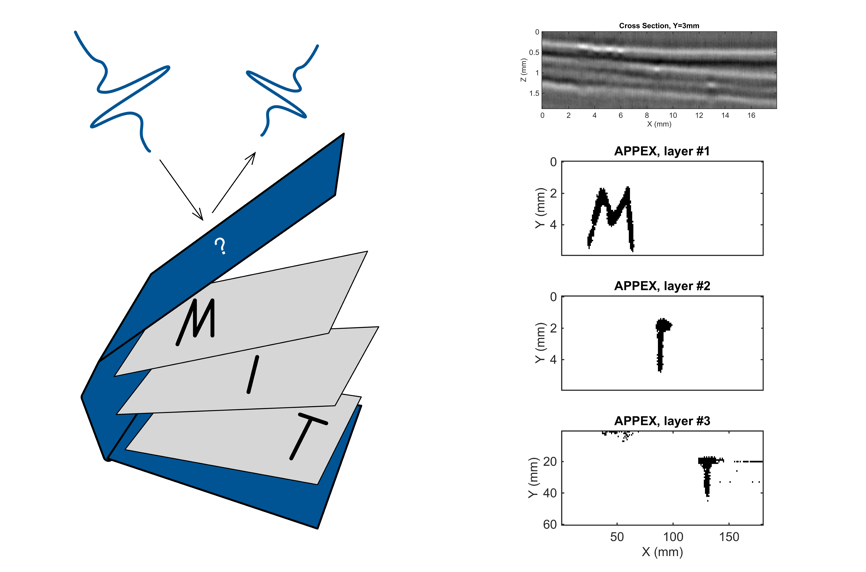
We’re not superheroes yet.
Anyone harboring aspirations to be the first T-ray-wielding superhero may have to wait a little longer before they can take their T-ray vision for a test drive -– there’s still some way to go before researchers figure out a way to miniaturize the technology and put terahertz in the palm of our hands. Still, we can already use our cell phones to see infrared light; perhaps we’ll have the capability to see in terahertz in the future, too, says Redo-Sanchez. And when we do, who knows what we will find. A Starry Night with only a moon? The Mona Lisa with a stony frown?









